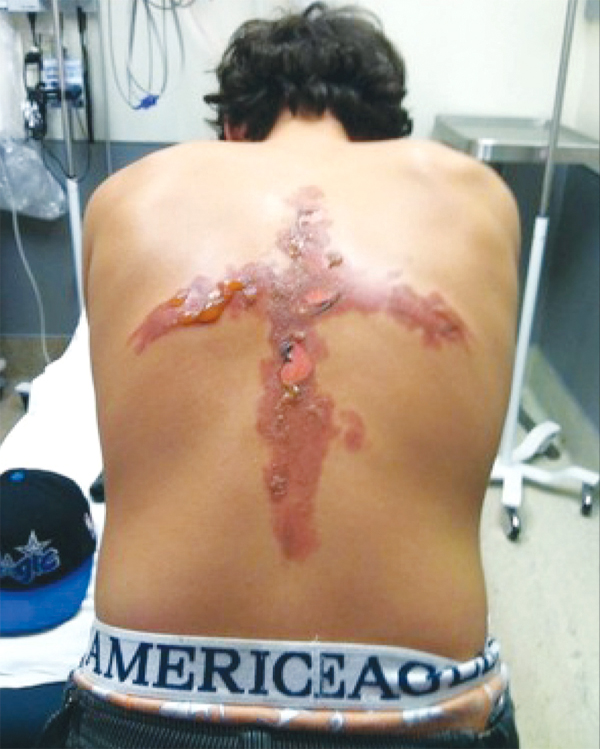THE dangers of social media internet sites are conspicuous and ominous but more than that they hold the power of influence over young minds that these sites have amassed as fans and subscribers. The incident reported on the front page of the Tuesday VOICE November 18, 2014 puts the seriousness of this situation front and centre. A sixteen year old student in trying to accomplish an online promoted stunt – the Fire Challenge, landed in intensive care suffering from severe burns. Needless to say Rochelle Gonzales did a great job in sensitizing parents to the internet influences their children are grappling with. Perhaps for the first time it hit home for some that these ideas, rather than being instantly dismissed as stupid, unfortunately find fertile ground in the minds of some youth.

The online world is both good and bad. It is replete with temptations and make believe, philosophy and pontifications that can easily entrap young naive and vulnerable minds, who are bated by their peers or simply driven by a pressing need to impress, to gain the approval of the world, stand out among the masses vying for attention by going viral or just for the heck of doing something wild, something that makes you feel part of the global village.
Social media has led young people to fights, commit crimes, post nudity and engage in sex videos just for the thrill of the post and for likes. As crazy as this seems, there is an irresistible pull for teens in particular; where to them the internet is just the place to unleash their imagination. It is quite possible that the lines of reality and cyber triggered fantasy are becoming very blurred and this is something parents will have to attune themselves to provide guidance on.
There are reasons why warnings are generally given about online networking, surfing for those under 18 and even disclaimers on websites itself. The warnings are acknowledgements that there are certain risks involved and the potential for exposure to certain material to unfavourably affect one’s judgment, thinking and behaviour.
Abetta Country believes that the sensitization Ms. Gonzalez spurred with the story “Fire Challenge sends boy, 16, to V.H.” should continue; not to focus on the teen who got hurt but to prevent the same or worst from happening to other youth out there. Just to name another challenge fad that the teens took part in that resulted in injuries, there was the Salt and Ice Challenge. The following news report states: “A new teen fad called ‘the salt and ice challenge’ is drawing crowds on social networking sites and YouTube. But like other teen ‘challenges,’ it has proven to be dangerous. And health-care experts are telling parents to talk to their kids about the risks.
“In Pittsburgh, USA, a 12-year-old boy will spend the summer recovering as a result of having a large cross burned into his back by his twin brother and a pal as part of this newest challenge, according to the Post-Gazette. He ended up in the West Penn Burn Center for treatment”.
For the challenge, teens put salt on their skin and then press ice into it to see who can tolerate the pain the longest. The longer the ice is pressed into the salt, the more serious the injury.
Again adults, this is serious business and should not be dismissed on grounds that your teenagers are too intelligent to take such risks. The best approaches to sit and hold discussions with them that will provide that balance being internet fads and the reality of pain and suffering. Make such discussions an opportunity for students to learn how to think logically, analytically and most of all for themselves.
Like the mom of the Saint Lucian victim the parents of the youngster cited here as a burn victim of the Fire and Ice challenge released the following statement: ““We want teenagers and the general public to know that ‘the salt and ice challenge’ is extremely dangerous. Videos on YouTube, Facebook and other social media do not accurately show the terrible injuries that can result. We are grateful that our son is recovering and hope that sharing his story will stop other young people from attempting this stunt.”
A different dare that’s been around for a couple of years, is the “the Skittles challenge” This one involves stuffing a whole bag of the colourful candies in your mouth at once and then trying to eat them. That poses a real choking danger.
There are over 30,000 insanely risky challenges on line. They are most likely here to stay. The important thing that parents, schools and other supporting agencies must do is to educate the children about the risks of ending up seriously injured, incapacitated such as loss of eyesight and limbs or even death may result from attempting those challenges.
All teenagers may not listen but many will give heed to a stern talking to by teachers, parents, guardians and other role models.














